Biology
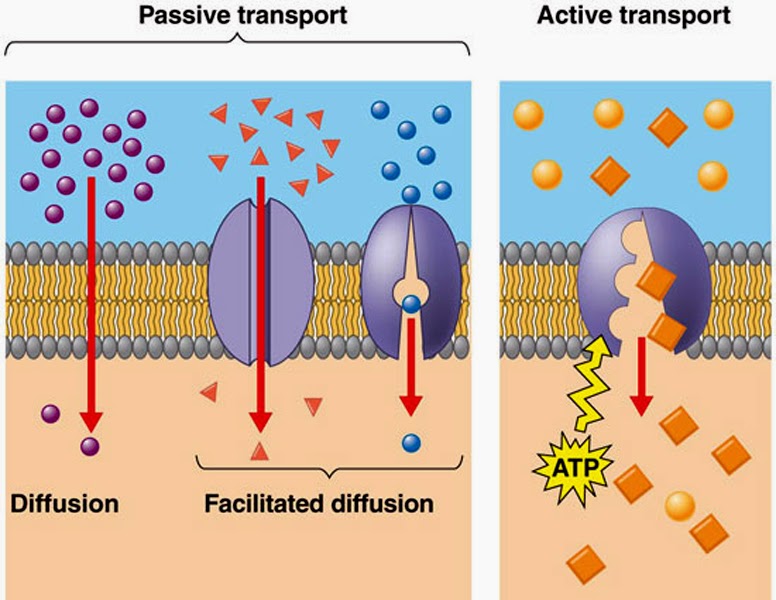 Substances can enter or leave a cell in 2 ways:
Substances can enter or leave a cell in 2 ways:
1) Passive
a) Simple Diffusion
b) Facilitated Diffusion
c) Osmosis (water only)
2) Active
a) Molecules
b) Particles
I. Passive transport across cell membranes
1. Diffusion

Summary of passive transport
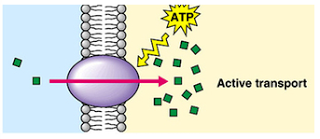
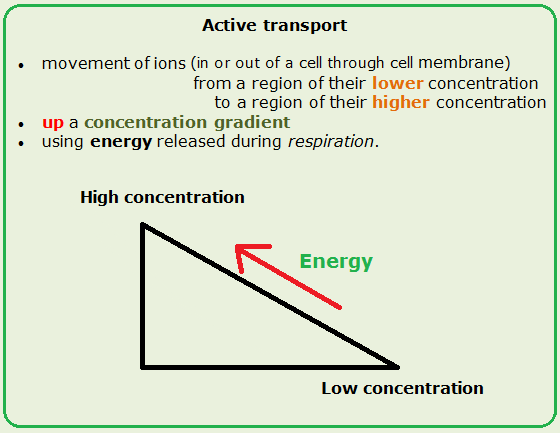
Exocytosis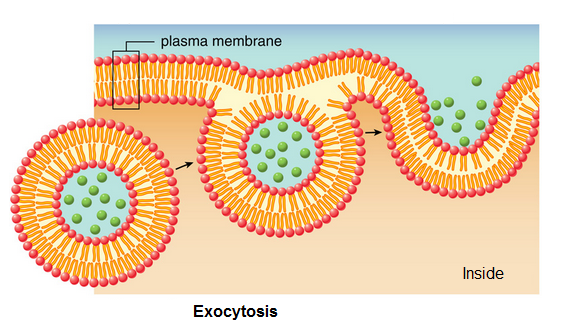
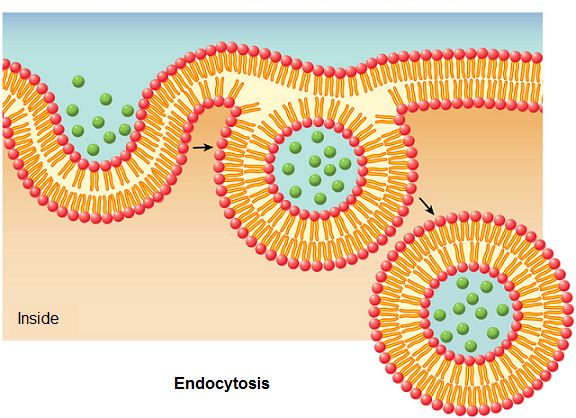
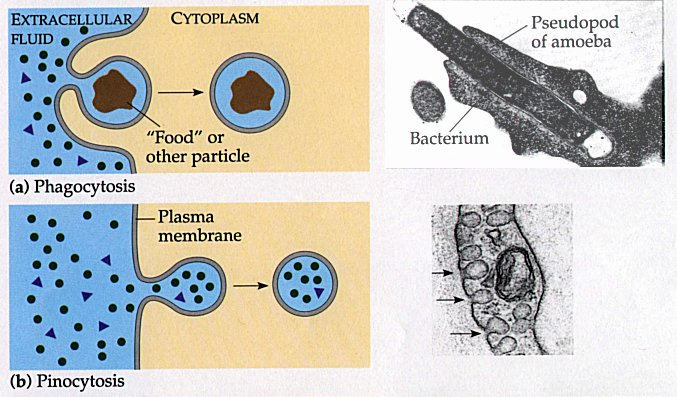
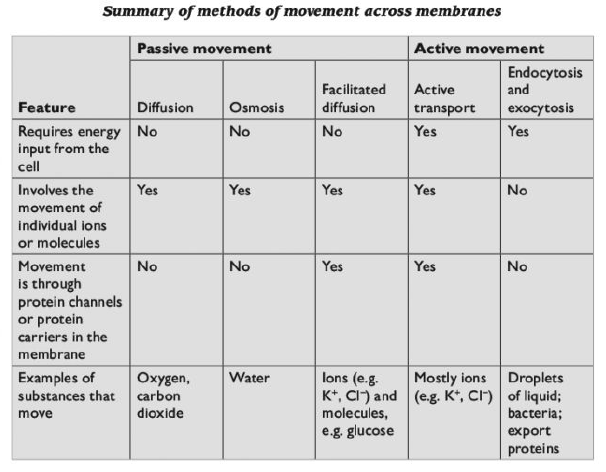

Video: Cell membrane animation
- Membrane Systems
Endoplasmic reticulum (ER) consists of a series of membranes creating channels within the cytoplasm, which are continuous with the nuclear membrane. They also form sheets that enclose cellular spaces called cisternae. ER provides a large surface area...
- Diffusion And Osmosis
Movement in a and out of cells (some key terms): Diffusion: the movement of a substance from a high concentration to a lower one as a result of their random movement. Give an example of diffusion Osmosis: The diffusion of water molecules from a...
- #27 Summary Of Cell Membrane
1 The basic structure of a membrane is a 7 nm thick phospholipid bilayer with protein molecules spanning the bilayer or within one or other layer. Phospholipids and some proteins move within the layers. Hence the structure is described as a fluid mosaic...
- #23.2 Cell Membranes And Transport - Syllabus 2016
4.1 Fluid mosaic membranes 4.2 Movement of substances into and out of cells The fluid mosaic model introduced in 1972 describes the way in which biological molecules are arranged to form cell membranes. The model has stood the test of...
- #23.1 Cell Membranes And Transport - Syllabus 2015
? Fluid mosaic model of membrane structure ? Movement of substances into and out of cells Learning Outcomes Candidates should be able to: (a) describe and explain the fluid mosaic model of membrane structure, including an outline of the roles of phospholipids,...
Biology
# 25 Passive and active transport across cell membranes

1) Passive
a) Simple Diffusion
b) Facilitated Diffusion
c) Osmosis (water only)
2) Active
a) Molecules
b) Particles
I. Passive transport across cell membranes
1. Diffusion
- Molecules and ions move freely in gases and liquids, each type of these particles tends to spread out evenly within the space available. This is diffusion.
- Diffusion is:
+ from a region of its higher concentration to a region of its lower concentration.
+ down a concentration gradient
+ no energy is used.
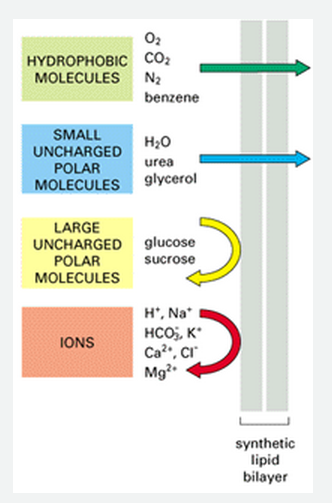
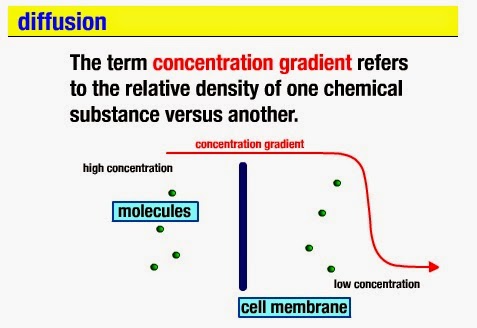 |
| Source: northlandcollege.edu |
- Some molecules and ions are able to pass through cell membranes --> The membrane is permeable. Some substances cannot pass through cell membranes --> The membrane is partially permeable.

- Example: O2 is at a higher concentration outside a cell (inside the cell it is being used in respiration). Oxygen molecules are small and do not carry an electrical charge --> they can pass freely through the phospholipid bilayer -->O2 diffuses from outside to the inside of the cell, down its concentration gradient.
2. Facilitated diffusion
- Facilitated diffusion is
+ down a concentration gradient
+ with the aid of special channel or carrier protein.
+ no energy is used.
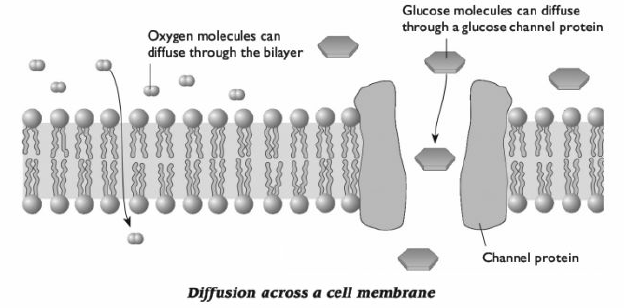
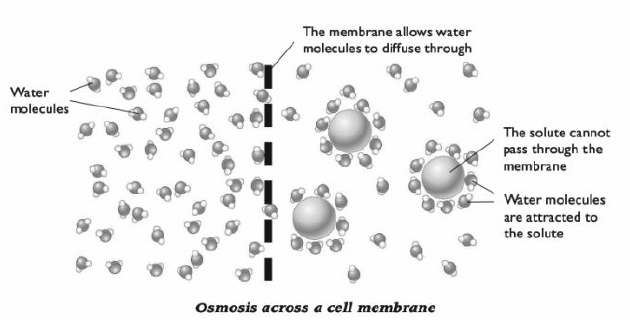
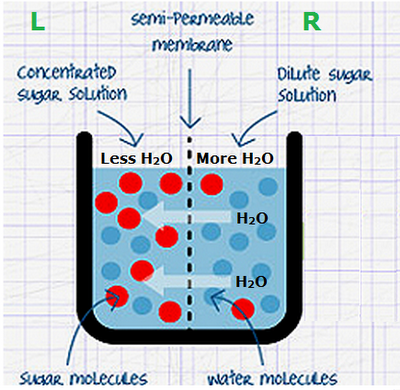 In the picture:
In the picture:
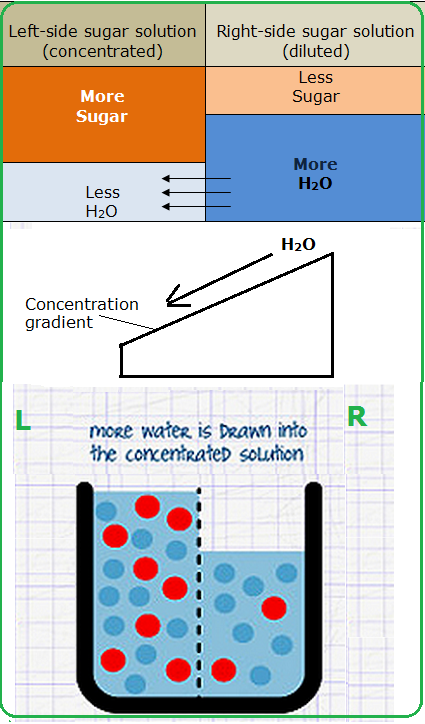
It is confusing to talk about the 'concentration of water', so we can say that a diluted solution (R) has a hige water potential and a concentrated solution (L) has a low water potentia.
- Ions or electrically charged molecules are not able to diffuse through the phospholipid bilayer because they are repelled from the hydrophobic tails. Large molecules are also unable to move through the phospholipid bilayer freely.
- However, the cell membrane contains special channel protein that provide hydrophilic passageways for these special ions and molecules. Diffusion through these channel proteins is called facilitated diffusion. Like 'ordinary' diffusion, it is entirely passive.
- Each carrier protein has its own shape and only allows one molecule (or one group of closely related molecules) to pass through. Selection is by size; shape; charge.
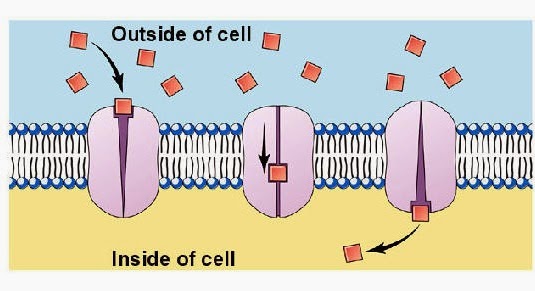 |
| Glucose and amino-acids are transporteg by facilitated diffusion. |

3. Osmosis
- Osmosis is
+ from a region of their higher concentration (dilute solution) to a region of their lower concentration (concentrated solution)
+ across a partially permeable membrane
+ down a water potential gradient.
+ no energy is used.
- The solute molecules are too large to get through the membrane. Water molecules carry tiny electrical charges but they ar small --> can move freely through the phospholipid bilayer of most cell membranes --> diffuse across cell membranes.

 In the picture:
In the picture: - The concentration of sugar molecules is higher on the concentrated solution (L) and lower on the diluted one (R).
- The concentration of water molecules is higher on the (R) and lower on the (L).

There is a water potential gradient between the 2 sides. The water molecules diffuse down this gradient, from a high water potential (R) to a low water potential (L).
Water potential (?) is measured in pressure units, kilopascals (kPa):
- Pure water ? = O kPa.
- Solutions ? = negative:
e.g a dilute sucrose solution ? = -250 kPa
a concentrated sucrose solution ? = -4000 kPa.
- Water moves by osmosis down a water potential gradient, from a high ? (- 250 kPA) to a low ? (- 4000 kPA).

Summary of passive transport
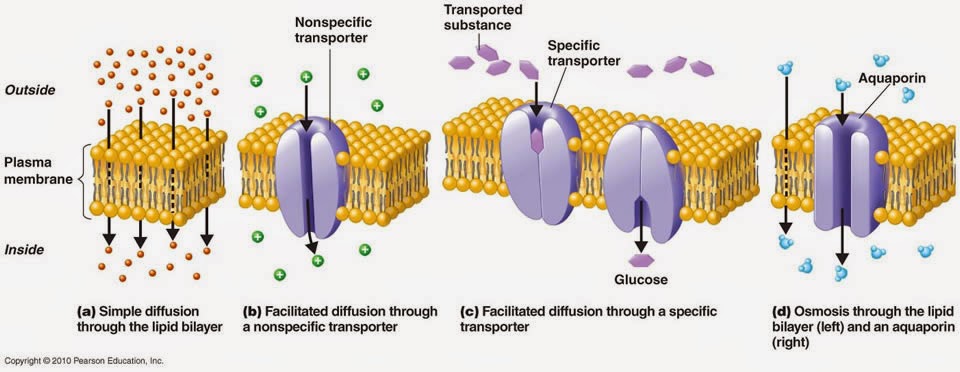 |
II. Active transport across cell membranes

Sometimes substances are required to be move against the concentration gradient, or faster than they would by passive transport. In these cases, active processes are used, which require energy. There are many occasions when cells need to take in substances which are only present in small quantities around them.
E.g. root hair cells in plants take in nitrate ions from the soil. Their concentration are often higher inside the root hair cell than in the soil, so the diffusion gradient is from the root hair à the soil. Despite this, the root hair cells still can take nitrate ions in, by active transport.

The active transport is done using carrier (transporter) proteins in the cell membrane. These use energy from the breakdown of ATP to move the ions into the cell. The carrier proteins are ATPases. Each carrier protein is specific to just one type of ion or molecule. Cells contain many different carrier proteins in their membranes.
 |
| Source: McGraw- Hill companies. |
III. Endocytosis and exocytosis (bulk transport)
Macromolecules are too large to move with membrane proteins and must be transported across membranes in vesicles.
Exocytosis
- the transport of macromolecules out of a cell in a vesicle
- the object is surrounded by a membrane inside the cell to form a vesicle
- the vesicle is moved to the cell membrane.
- the membrane of the vesicle fuses with the cell membrane, expelling its contents outside the cell.

Endocytosis
- the transport of macromolecules into a cell in a vesicle
- the cell puts out extensions around the object to be engulfed
- the membrane fuses together around the object, forming a vesicle.

- there are 2 types of endocytosis: phagocytosis (cell eating) and pinocytosis (cell drinking).



Video: Cell membrane animation
| Syllabus 2015 (c) describe and explain the processes of diffusion, facilitated diffusion, osmosis, active transport, endocytosis and exocytosis (terminology described in the IOB?s publication Biological Nomenclature should be used; see also section 5; no calculations involving water potential will be set); |
Syllabus 2016
4.2 Movement of substances into and out of cells
The fluid mosaic model allows an understanding of how substances enter and exit cells by a variety of different mechanisms.
Investigating the effect of increasing the size of model cells allows an understanding of the constraints of obtaining resources across the cell surface and moving substances out of cells.
a) describe and explain the processes of diffusion, facilitated diffusion, osmosis, active transport, endocytosis and exocytosis (no calculations involving water potential will be set)
f) explain the movement of water between cells and solutions with different water potentials and explain the different effects on plant and animal cells
- Membrane Systems
Endoplasmic reticulum (ER) consists of a series of membranes creating channels within the cytoplasm, which are continuous with the nuclear membrane. They also form sheets that enclose cellular spaces called cisternae. ER provides a large surface area...
- Diffusion And Osmosis
Movement in a and out of cells (some key terms): Diffusion: the movement of a substance from a high concentration to a lower one as a result of their random movement. Give an example of diffusion Osmosis: The diffusion of water molecules from a...
- #27 Summary Of Cell Membrane
1 The basic structure of a membrane is a 7 nm thick phospholipid bilayer with protein molecules spanning the bilayer or within one or other layer. Phospholipids and some proteins move within the layers. Hence the structure is described as a fluid mosaic...
- #23.2 Cell Membranes And Transport - Syllabus 2016
4.1 Fluid mosaic membranes 4.2 Movement of substances into and out of cells The fluid mosaic model introduced in 1972 describes the way in which biological molecules are arranged to form cell membranes. The model has stood the test of...
- #23.1 Cell Membranes And Transport - Syllabus 2015
? Fluid mosaic model of membrane structure ? Movement of substances into and out of cells Learning Outcomes Candidates should be able to: (a) describe and explain the fluid mosaic model of membrane structure, including an outline of the roles of phospholipids,...
